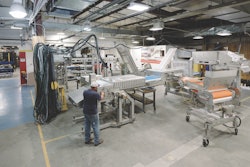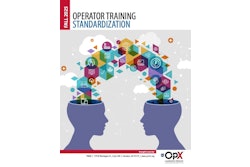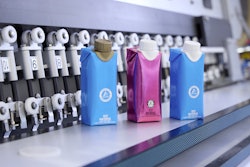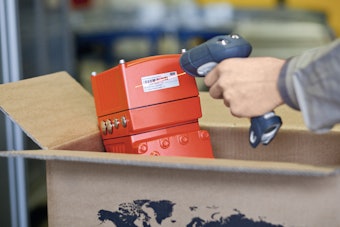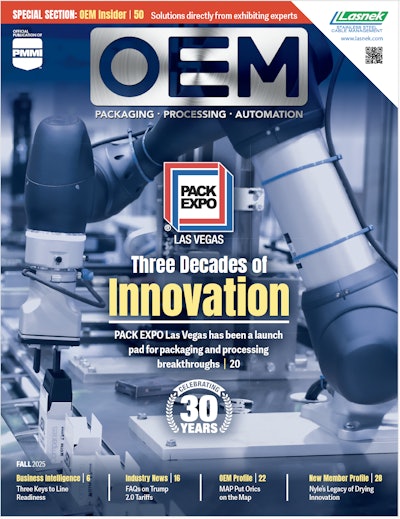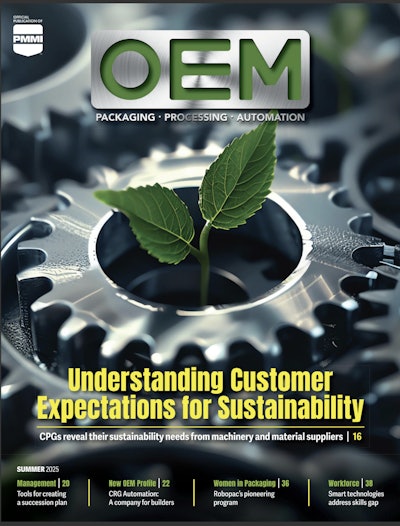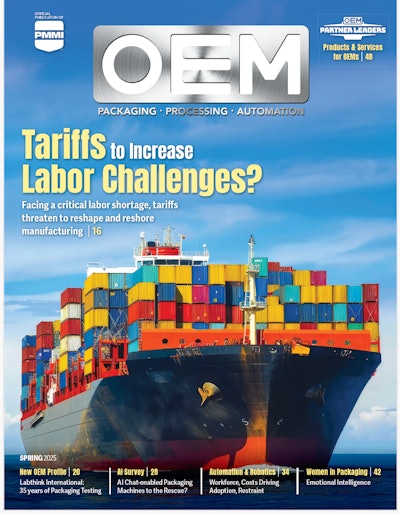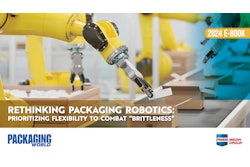According to management at Miami, OK, mushroom producer J-M Farms, standing out from the competition can be difficult in today’s global marketplace. The company has learned to differentiate itself by strictly guarding quality at every turn. It performs three to four third-party food safety audits annually and imposes strict quality and safety regulations on itself—beyond what is required by the FDA. Ethical farming methods mean nothing is wasted, and leftovers are recycled or repurposed. This both ensures the company is a good neighbor in its own community and creates savings that allow it to keep prices consistent. These measures have earned the company a loyal following of repeat customers at grocers and retailers throughout the South and the Midwest, and management believes that the J-M Fresh label imparts repeat business to grocers who carry the product.
Based on this model, the company has grown in production over 40 years in business to a current figure of 30 million pounds of whole or sliced mushrooms per year. But even at that volume—about a million pounds of sliced button mushrooms every other week—trays of the company’s sliced mushrooms were still being hand portioned, hand packed, and weighed on hand scales. And for some time, they had been keeping up.
But unfortunately, just as many other CPGs and food producers have experienced in recent years, quality people are getting harder and harder to find. With mushroom volume only increasing, Terry Stoelzing, Operations/Production Director, decided to turn to automation specifically on the sliced mushroom line.
“The biggest factor in us looking to automate the packaging process was labor. We had a lot of trouble just trying to get people to come to work,” Stoelzing says. “Of course, we want to reduce as much cost, waste, and labor as we possibly can, but we originally started looking at [automation] because people just wouldn’t show up for work.”
As he investigated further, he realized that the ability to minimize overweights was also extremely attractive. Consider the shift from hand scales, which measure in ounces, to automated scales measuring in grams. The difference between being one incremental unit overweight in ounces versus grams is substantial given there are 28 grams in an ounce.
“It’s a huge difference,” he says. “You’re going to save several thousand pounds a week right there.”
Coming up with a game plan
When automating, the first order of business is often to get a clear understanding of where the process is before determining where you want new equipment to take it. In the existing 8-oz and 16-oz sliced mushroom line, hand labor would physically collect and cart processed mushrooms to hand-weighing stations. Trays were manually denested, manually filled, and manually weighed at the station. Separately, film would first be fed first into a labeler, then into an Omori tray wrapper before passing under a Mettler-Toledo Safeline metal detector. The trays were manually packed out at 12 trays/case and hand-palletized.
“The first thing we did is look at what we were selling at that point and how fast we were going,” Stoelzing says. “We needed to be able to produce at least that amount in an eight-hour day. In our existing process, we were probably hitting about 140 to 150 cases per hour. But with some of our existing equipment that we planned to keep, we figured out that we could average 210 cases per hour, and that could go to as high as 280 cases per hour once you take out breaks, lunch, changeovers, and other disruptions. So, we determined that 300 cases per hour was what we wanted to do with the automation as our goal for throughput. But we understand that it takes some time to change over labels, to change over film, and to change over from white to brown mushrooms, so our practical goal was to be running from 210 to 280 cases per hour with a new system.”
First of two new packaging lines
With current throughput analyzed and an improvement metric in mind, Stoelzing began shopping and talking about his ideas with equipment vendors. He selected the Paxiom Group and its WeighPack Systems Inc. division to act as an equipment integrator to accomplish what he was after. A PrimoCombi multihead weighing system would serve as the anchor piece. And when all was said and done, the project went so well that J-M Farms ordered a second line.
In the first iteration of the complete line, sliced mushrooms leave the processing room to be manually rolled to a bulk hopper and dropped onto a horizontal transfer conveyor. Product is then vertically carried to a mezzanine level on a 90-deg infeed conveyor, where it lands in a vibratory feed pan. The feed pan gently drops the product into a WeighPack PrimoCombi 14-head 2.5-L combination scale that accurately weighs and dispenses mushrooms.
An adjacent portion of the system incorporates a manually fed tray denester, also from WeighPack. It feeds trays onto a container indexing conveyor that orients the trays, two at a time, under the combination scales for filling.
The container indexing conveyor carries the filled trays to the pre-labeled film feeding the Omori tray wrapper before being manually packed out at 12 to a case.
Results metrics
By automating the hand weighing and hand filling out of the line, Stoelzing has gone from 14 operators to four. Also, speeds have increased to 40 fills/min of 16-oz trays, and 60 fills/min of 8-oz trays.
“Previously, we had tried to get our scalers to hit six seconds per tray. That includes picking the tray up, putting the tray on the scale, taking the tray from the scale, and putting it on the conveyor. We tried to get to that six-second mark for a fill. So to reach a speed of 60 trays per minute, we would have needed 10 people on the line just in filling,” he says.
Meanwhile, overweights have been limited to less than 2%, which accounts for considerable cost savings in reduced giveaway. While some of this can be attributed to machines’ enhanced repeatability compared to hand labor, it’s also due to the operators’ ability to accurately control the machine and precisely manipulate it by using its reporting and data collection capabilities.
Using the data, Stoelzing was able to identify and attain that <2% number as a safe overweight metric that would represent marked improvement over the previous manual system, but keep a comfortable buffer from underweights.
“Before and after the installation, I tracked our labor, tracked our speeds, calculated our overtime savings, and considered what our cost savings was going to be by limiting overweights on packs,” he says. “We think the return on investment for the WeighPack system was three months, based on those savings and improvements.”
Unexpected benefit
Though it wasn’t a wish-list item going into the project, Stoelzing appreciates the new system’s ability to “lock out” operators who might want to do some uninvited tinkering to the system.
“The worst is when you have somebody who doesn’t know what they’re doing—maybe they’re new or maybe someone thinks they can run it faster than what the machine is set to do. They’ll go in and change the programing,” he says. “The WeighPack system allows operators adjust on the fly without changing programming.”
For instance, when running less dense product that’s not as heavy, operators are able to adjust the length of time that the vibrators are on in the vibratory pans, feeding the scale to move more product and retain previous speeds. If they’re running dense product that’s very heavy, they can slow the vibrators, slowing the infeed to avoid overfilling the buckets and throwing the scale into an overweight system.
“We have all of the programming password-protected, but you don’t need to type in the password to be able to make those kinds of adjustments while you’re running. You can just adjust the scale and then when it turns off at night it doesn’t save any of the changes,” Stoelzing says.
Doubling up
The success of the first installation inspired J-M Farms to invest in a second, nearly identical WeighPack system only a year after the first one went online. The newer system incorporates a longer infeed conveyor that comes straight from the processing room, thus eliminating the need for another manual roller-conveyor process to carry product from processing to a bulk hopper.
Because of the longer distance on the conveyor, it rises at a 33-deg angle over more than 50 feet of horizontal travel to feed the combination scale. This departure from the first system’s design accommodates the discharge point of the slicer.
“Right before product goes through the wall, the two slicers are sitting right beside each other,” Stoelzing says. “So I can actually have a single person feed both lines, and that’s a labor savings.”
The two systems each run at the 40 trays/min for a 16-oz tray size, and 60 trays/min for the 8-oz. So while the newer of the two systems isn’t necessarily running faster, the two in tandem can run 80 trays/min or 120 trays/min on respective tray sizes.
Because the two lines are accepting the same product from the processing room, they can then reconvene after wrapping and labeling in a single, longer case-packing area. While that section of the line is still fairly manual, it may not always be so.
“We want to automate our pack-out lines. We haven’t really found what we’re super happy with on the end of the lines yet, but we’re still looking, so that’s what’s next for J-M Farms,” Stoelzing says.


